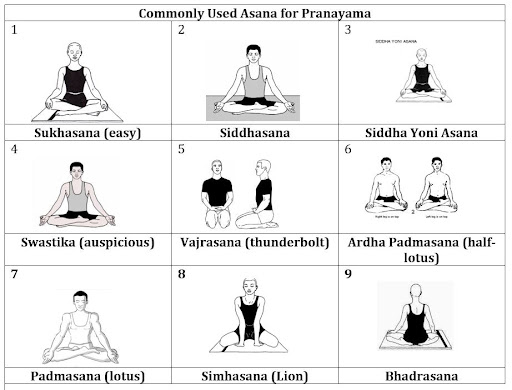75, 1 Main, Thyagaraja Nagar, Bangalore, Karnataka, 560028
+91 792-545-2949
Mon - Fri: 6:30am - 07:45pm
75, 1 Main, Thyagaraja Nagar, Bangalore, Karnataka, 560028
+91 792-545-2949
Mon - Fri: 6:30am - 07:45pm

Pranayama is the yogic practice of focusing on breath. In Sanskrit, prana means "vital life force", and yama means to gain control. In yoga, breath is associated with the prana, thus, pranayama is a means to elevate the prana shakti, or life energies. Pranayama is described in Hindu texts like the Bhagavad Gita and the Yoga Sutras of Patanjali. Later in Hatha yoga texts, it meant the complete suspension of breathing.
Prāṇāyāma (Devanagari: प्राणायाम prāṇāyāma) is a Sanskrit compound. It is defined variously by different authors.
Macdonell gives the etymology as prana (prāṇa), breath, + āyāma and defines it as the suspension of breath.
Monier-Williams defined Pranayama in terms of the elements of Kumbhaka.
Monier-Williams defines the compound prāṇāyāma as "of the three 'breath-exercises' performed during Saṃdhyā (See pūrak, rechak (English: retch or throw out), kumbhak". This technical definition refers to a particular system of breath control with three processes as explained by Bhattacharyya: pūrak (to take the breath inside), kumbhak (to retain it), and rechak (to discharge it). There are other processes of prāṇāyāma besides this three-step model.
V. S. Apte's definition of āyāmaḥ derives it from ā + yām and provides several variant meanings for it when used in compounds. The first three meanings have to do with "length", "expansion, extension", and "stretching, extending", but in the specific case of use in the compound prāṇāyāma he defines āyāmaḥ as meaning "restrain, control, stopping".
Ramamurti Mishra gives the definition:
Expansion of individual energy into cosmic energy is called prāṇāyāma (prāṇa, energy + ayām, expansion).
Pranayama is the fourth "limb" of the eight limbs of Ashtanga Yoga mentioned in verse 2.29 in the Yoga Sutras of Patanjali. Patanjali, a Hindu Rishi, discusses his specific approach to pranayama in verses 2.49 through 2.51, and devotes verses 2.52 and 2.53 to explaining the benefits of the practice. Patanjali does not fully elucidate the nature of prana, and the theory and practice of pranayama seem to have undergone significant development after him. He presents pranayama as essentially an exercise that is preliminary to concentration.